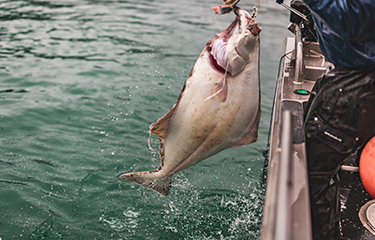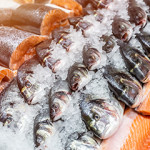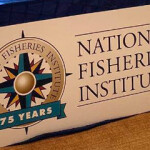NOAA finalizes NPFMC decision to implement flexible catch limits for Alaska’s halibut fishery

NOAA Fisheries issued a final rule effective 1 January, 2024, to implement Amendment 123 to the fishery management plan for groundfish of the Bering Sea and Aleutian Islands (BSAI) management area.
The final rule amends regulations governing limits on Pacific halibut, linking the halibut prohibited species catch limit for Amendment 80 commercial groundfish trawl fleet in the BSAI groundfish fisheries to halibut abundance. The Amendment 80 sector is a fleet of nearly 20 catcher-processor vessels in the Bering Sea that target Pacific cod, Pacific Ocean perch, Atka mackerel, rock, yellowfin, and flathead sole. The BSAI fishery management plan has previously set the annual halibut mortality prohibited species catch limit for Amendment 80 sector at 1,745 metric tons (metric tons), as halibut is incidentally taken as a bycatch in groundfish fisheries.
NOAA said the rule is expected to reduce halibut mortality and may result in additional harvest opportunities in the commercial halibut fishery and subsistence and recreational fisheries.
The North Pacific Fishery Management Council recommended this action at a December 2021 meeting and further approved this action in an official letter it issued on 8 March 2023. The council said Amendment 123 achieves its intent to link Amendment 80 sector’s prohibited species catch limit to halibut abundance. The action was also reviewed by the Alaska Bycatch Review Task Force, which was created in 2021 by Alaska Governor Mike Dunleavy to help better understand unintended bycatch of high-value fishery resources in state and federal waters.
The amendment will replace the static catch level of 1,745 MT by establishing a process for annually setting the halibut prohibited species catch limit based on the most recent halibut abundance indices. Catch limits will range from the current limit of 1,745 MT when abundance is high in the International Pacific Halibut Commission index and either high or low in the NOAA Fisheries Eastern Bering Sea index, to 35 percent below the current limit when abundance is very low in the International Pacific Halibut Commission index and low in the NOAA Fisheries Eastern Bering Sea index.
In recent years, catch limits for the commercial halibut fishery have declined in response to changing stock conditions. The decision reached by NPFMC and NOAA came after years of debate about the issue and concerns from the Amendment 80 fleet that cutbacks in their catch limits could cost it up to USD 138 million (122 million).
In a presentation at the 24th session of the International Pacific Halibut Commission on 29 November, IPHC Secretariat Ian Stewart said while fishing intensity was at its lowest in recent years – catch limits were set at 37 million pounds in 2023, down 10 percent from 2022 – the Pacific’s halibut stock “is at the lowest absolute population level in the last 30-plus years.”
“Recent poor recruitment and low weight-at-age have resulted in low productivity relative to the long-term average,” Stewart wrote in a presentation.
The stock status is at 42 percent of the unfished level at the beginning of 2024, and because ecosystem and climate uncertainty remains high, it is unclear when or if long-term average productivity levels will return, Stewart said. Changes in ocean temperature and ice cover have hurt halibut stocks, potentially through disruption of the food web, making predictions difficult to make, he said.
“[There are] no clear indicators, good or bad, for Pacific halibut,” Stewart said.
The IPHC will meet from 22 to 26 January 2024 to determine a total constant exploitation yield for halibut fishers across Alaska ahead of the season’s opening in March 2024.
Reporting by Carli Stewart
Photo courtesy of Israel Patterson/Shutterstock






Share